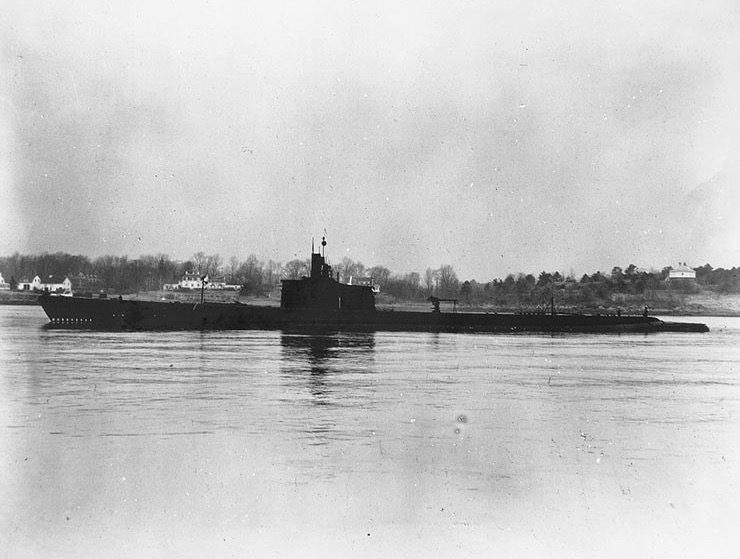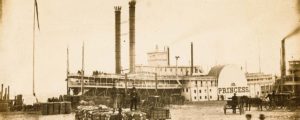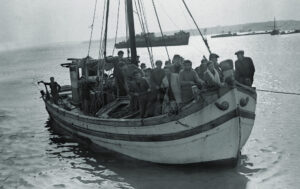Divers off the coast of Phuket, Thailand believe they have found the wreck of the USS Grenadier, one of the 52 American submarines lost during the Second World War.
Since October of last year, six dives have been conducted, with photographs and other evidence sent to the United States Naval History and Heritage Command for verification, The Associated Press reports.
Discovered by an international team of Singaporean-based Jean Luc Rivoire, Benoit Laborie of France, Lance Horowitz of Australia, and Ben Reymenants of Belgium, the 1,475-ton, 307-foot long Grenadier met its watery end 77 years ago off the Malay Peninsula near Thailand.

On April 21, 1943, after several unsuccessful days of hunting down Japanese cargo, the Grenadier was ordered by its commander, Lt. Cdr. J.A. Fitzgerald, to change course and shift 10 miles west of the peninsula to seek out any incoming enemy ships. It was the Grenadier’s sixth war patrol after leaving Pearl Harbor a year earlier on February 4. Before the sub was scuttled on that April morning, it boasted a record of six enemy ships sunk, for 40,700 tons, and two ships damaged, for 12,000 tons, writes the Naval History and Heritage Command.
After initially being spotted by a Japanese plane, Lt. Cdr. Fitzgerald ordered an immediate crash dive––but for the Grenadier the command came too late. Unable to descend far enough or fast enough, the submarine was subsequently rocked by concussive blasts as two Japanese bombs found their mark.
Resting on the sea floor 270 feet below the surface, a fire broke out in the control cubicle, which kept the ship without any propulsion. The hull and hatches, Fitzgerald would later report, were leaking badly as a “bucket brigade” attempted to keep the motors dry. For 13 hours the crew fought valiantly—largely in the oppressive darkness—to keep the submarine functioning.
However, it became clear that the sub was “too crippled to flee or fight,” and the sub made its way to the surface. “An effort was made to rig makeshift sails on a periscope to reach shore before blowing up the vessel,” writes The Associated Press, “but there was dead calm.”
Two Japanese ships were spotted off on the horizon and codebooks and equipment were hastily destroyed. At 0830 the Grenadier was scuttled and abandoned, with all 76 submariners having survived the attack. Eventually the crew were hauled aboard an enemy armed merchant ship and taken to Penang, a major Malayan port town under Japanese control.
Their ordeal was just beginning however, as the crew would endure more than two years of torture and starvation at the hands of their Japanese captors.
“The rough treatment started the first afternoon, particularly with the (enlisted) men. They were forced to sit or stand in silence in an attention attitude,” Fitzgerald wrote after the war. “Any divergence resulted in a gun butt, kick, slug in the face or a bayonet prick. In the questioning room, persuasive measures, such as clubs, about the size of indoor ball bats, pencils between the fingers and pushing of the blade of a pen knife under the fingernails, trying to get us to talk about our submarine and the location of other submarines.”
By war’s end, four men died due to lack of medical attention.
Now, 77 years later researchers are one step closer to locating the final resting place of the Grenadier.
“We went back looking for clues, nameplate, but we couldn’t find any of those,” Horowitz told The Associated Press. “And in the end, we took very precise measurements of the submarine and compared those with the naval records. And they’re exactly, as per the drawings, the exact same size. So we’re pretty confident that it is the USS Grenadier.”
And while “a complete review, analysis, and documentation may take two months to a year to complete,” writes Dr. Robert Neyland, the head of the Navy’s Underwater Archaeology Branch in an email to The Associated Press, the case of the Grenadier will likely take only a few months.





